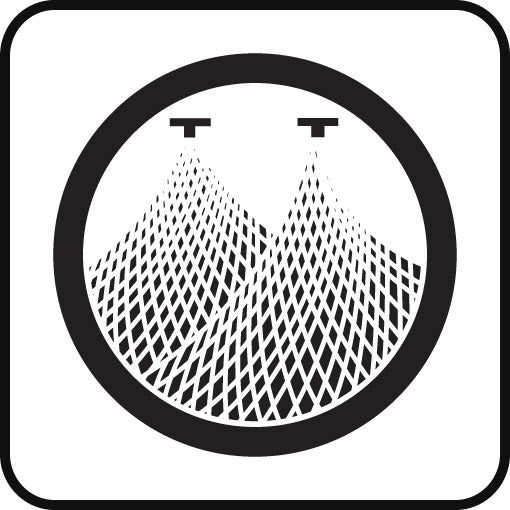at06
Max Eastley, Evan Parker, Mark Wastell, Graham Halliwell
A Life Saved by a Spider and Two Doves
Max Eastley, Evan Parker, Mark Wastell, Graham Halliwell
Featuring: Evan Parker Mark Wastell Max Eastley
Extract:
Couldn't load pickup availability
Max Eastley - arc (electro-acoustic monochord)
Graham Halliwell - computer & electronics
Evan Parker - soprano saxophone
Mark Wastell - tam-tam, metal percussion & harmonium
1. a carp gives a lesson in perseverance 15:53
2. human fireflies 14:27
3. the chessboard cherry tree 16:51
Recorded at the church of St.James the Great, London, September 2007

Reviews
“As George Lewis recently said, it has become increasingly difficult to distinguish between improvised and composed music. It’s a distinction he would like to see dropped. For much of its length this delicately nuanced recording could quite easily be a formal electroacoustic composition, an impression strongly reinforced by the fact that Evan Parker sounds curiously unfamiliar in this new grouping. He’s well used now to working with electronics, but this was a first convocation of this quartet with Max Eastley, Graham Halliwell and Mark Wastell, and in the full but not unduly resonant acoustic of St.James the Great in North London, the four musicians move round one another with the gracious decorum and unfussy discipline of monks walking a prayer path. The track titles taken from ancient Japanese folklore perhaps suggest another provenance, but there is nothing pictorial or impressionistic about this music.
Wastell’s metal percussion and the sliding tones from Eastley (or is it Halliwell?) sometimes recall honoured British improvisation of the kind associated with Ovary Lodge, who offered similar hostages to critical fortune by providing haiku-like titles. This is estimably quiet music and eminently reasonable, which might seem a strange word in the circumstances. Listen to Parker alone, insofar as one can separate even him from a shared soundworld, and he could be examining his sound and its processes rather than spinning a linear narrative. One always tends to reach for ‘stillness’ as a shorthand for music of this kind, but that’s wrong too. It’s all movement, but movement of a markedly abstract and ratiocinative sort, coming back to its own subtly altered premises at the end of each of the three pieces. The notes suggest that, having embarked on this small pilgrimage at the recording, the group are now working regularly. That’s excellent news.”
Brian Morton, The Wire
“Two generations meet, it seems, Eastley and Parker on one side and Halliwell and Wastell on the other. The music is from their first meeting as a quartet, which has continued afterwards. The improvisations here aren't easy to describe. There are on one hand the electronic and electric-charged machinery, which provide a very modern look, crackling, drone, static, but on the other hand there are the acoustic instruments, especially Parker's saxophone, that sound very traditionally improvised. However most of the time this marriage works wonderfully well. An endless stream of sounds colliding into each other, bumping but also carefully missing each other, like a near collision. In that way each of the players knows how to avoid the other, but also it's a matter of respect for the others; each of the players gets room to play, to develop, take shapeand transform, noting what the others do and adding where necessary. A great work. “
Frans de Waard, Vital Weekly
“These three improvisations, traced in the air of a London church, form one of the most beautiful sound landscapes of the year. This is the first offering from a quartet which has become a regular grouping, and whose open and sensitive music reaches a high plateau of deep satisfaction. There’s nothing forced or competitive about this meeting of generations and styles (which are certainly different). It is a process of mutual connection; everything is placed with impeccable delicacy into the swirling mists and drones of sound, and interwoven with the furtive embellishments of the soprano. Collective and majestic.” Guillaume Tarche, Improjazz
“Eastley is a sound sculptor and instrument builder who here plays an arc, an “electro-acoustic monochord” of his own devising in the rich tradition of Harry Partch and Eddie “One String” Jones. It’s a nine-foot long, wooden, single-string instrument that changes pitch with a flexing of the wood. It’s also bowed and played with glass rods and its sound is altered electronically. Graham Halliwell, who has previously concentrated his energies on saxophone feedback, here plays computer and electronics, while Mark Wastell plays tam- tam, metal percussion and harmonium. Parker plays soprano exclusively. As all that might suggest, there’s a lot of droning going on, and the most characteristic sound is wisps of high-pitched soprano saxophone against the slow, harmonium-like oscillations of the other instruments. Even Wastell’s percussion is sometimes used for sustained sound, a deeply resonant gong shimmering through the electronics. The occasional glittering flash of struck percussion emphasizes the heightened resonance of the church in which it was recorded, but with the further suggestion of Japanese percussion employed in a Buddhist service, an inevitable analogy in a CD with artwork and titles derived from traditional works of Japan. Within its almost constant state, the music is always changing, sounds shifting and mutating. There’s no easy way to describe it, index perhaps of one of its values. The music is both stimulus and companion to reverie, a work of great beauty.” Stuart Broomer, Point of Departure

